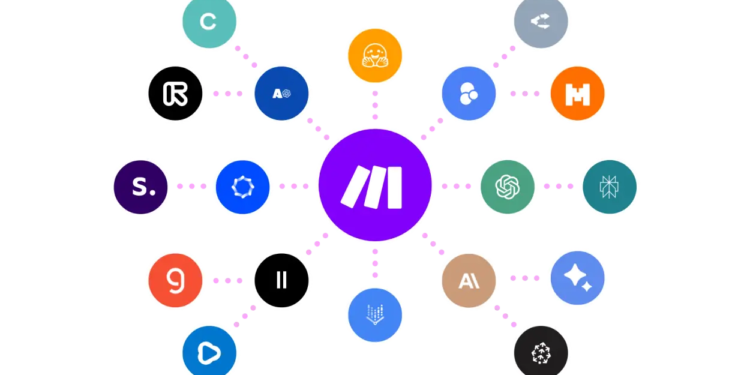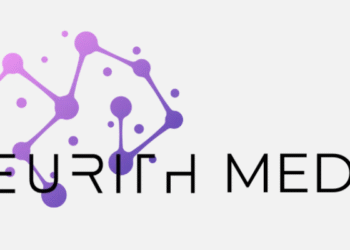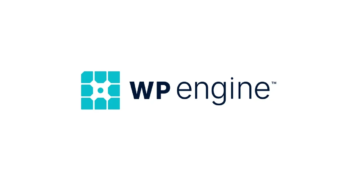What if you could eliminate hours of repetitive tasks with just a few clicks? Businesses today rely on seamless processes, yet manual workflows slow productivity. A powerful workflow automation tool like Make.com transforms this challenge into efficiency.
This platform connects apps and automates tasks without coding. With over 1,000 integrations, it replaces manual steps with smooth, error-free workflows. Teams save time on data transfers, notifications, and reports.
The visual builder and conditional logic make it easy to customize. Whether you need a free plan or enterprise-level solutions, scaling is seamless. Ready to build your first automated scenario? Let’s dive in.
Key Takeaways
- Make.com is a no-code automation platform for streamlining tasks.
- It connects with 1,000+ apps to replace manual processes.
- Teams save time on repetitive work like data entry and alerts.
- Features include a drag-and-drop builder and conditional logic.
- Scalable plans fit businesses of all sizes.
What Is Make.com?
Manual tasks drain productivity—what if you could automate them effortlessly? Formerly known as Integromat, this tool launched in 2012 and now processes over 4 million daily operations. It connects apps to streamline repetitive work, saving teams hours.
A No-Code Automation Platform
This integration platform requires zero coding skills. Users build automations using a drag-and-drop interface. For example, a new Trello card can trigger a Google Doc creation—all without writing a single line of code.
Core components include:
- Triggers: Events like receiving an email.
- Actions: Tasks such as updating a spreadsheet.
- Filters: Conditions to control workflow paths.
Key Features of Make.com
With 1,000+ native integrations (Slack, Trello, Google Drive), it syncs data across applications. Unlike Zapier, it offers deeper customization. Compared to n8n, its interface is simpler for beginners.
Enterprise teams benefit from real-time monitoring and error handling. Whether you need basic scenarios or complex workflows, scaling is seamless.
How to Get Started with Make.com
Ready to simplify your workflow in minutes? Getting started is quick and easy. Follow these steps to set up your account, choose the right hosting, and navigate the dashboard like a pro.

Creating Your Account
Sign up with your email—verification takes seconds. The free plan includes 1,000 monthly operations, perfect for testing automation. Paid plans start at $9/month for heavier usage.
Choosing the Right Hosting Region
Select EU or US hosting during setup. European users should pick EU servers for GDPR compliance. This ensures data privacy and faster performance.
Navigating the Dashboard
The dashboard shows scenario templates, connections, and operation history. Track your “Operations remaining” counter to monitor usage. For team onboarding, assign roles early to streamline collaboration.
Understanding Make.com’s Terminology
Ever felt overwhelmed by automation jargon? Mastering key terms unlocks this platform’s full potential. Clear definitions help you design efficient workflows without guesswork.
Scenarios, Modules, and Operations
A scenario is a multi-step automation, like moving a Trello card to trigger a Google Doc update. Each step is a module—either a trigger (starts the process) or an action (completes a task).
Operations are single task executions. The free plan allows 1,000/month, so optimize scenarios to avoid exceeding limits. For example, filtering low-inventory alerts saves operations by reducing unnecessary triggers.
Triggers, Actions, and Filters
Triggers launch automations, like receiving an email. Actions follow, such as logging data to a spreadsheet. Use filters for conditional logic—auto-approve orders over $100 or flag exceptions.
Webhooks (instant triggers) differ from polling (checks for updates). Choosing the right method prevents delays. With these terms clarified, the learning curve flattens, letting you build faster.
Building Your First Automation
Transform manual processes into smooth workflows with your first automation. This guide walks you through selecting triggers, linking apps, and testing scenarios. Even complex workflows become manageable with the right steps.

Selecting a Trigger App
Start by choosing an app to initiate your workflow. For example, Trello’s “Watch cards moved” trigger launches actions when a card changes lists. Pick apps you use daily to maximize efficiency.
Popular options include Slack messages or Google Forms submissions. Ensure the trigger aligns with your goal—like automating follow-ups for new leads.
Setting Up Connections
Link your apps securely via OAuth. Click “Add Connection” and log in to authorize access. For Google Drive, grant permissions to create or edit files.
Repeat for secondary apps like Trello. The platform stores credentials, so users create seamless links once. Double-check permissions to avoid errors later.
Testing and Debugging Your Scenario
Use “Run Once” to test the automation. Check if Trello card moves trigger Google Doc updates as expected. If errors occur, review logs for misconfigured modules.
Simplify troubleshooting by testing one step at a time. The template library offers pre-built solutions—like social media cross-posting—to jumpstart tasks.
Advanced Workflow Automation with Make.com
Want to take your automation skills to the next level? This platform supports intricate complex workflows with multi-step logic and AI-driven features. From approval chains to bulk data processing, advanced tools eliminate bottlenecks.
Multi-Step Scenarios
Build sequences like auto-approving invoices or syncing CRM updates across apps. The platform allows users to chain 20+ actions per scenario, such as:
- Sequential approvals with Slack notifications at each step.
- Processing arrays to update 100+ spreadsheet rows in one workflow.
- AI Builder predicts delays and adjusts task priorities.
Conditional Logic and Branching
Route data dynamically using “if/then” rules. For example, pause workflows on weekends or flag orders under $50 for review. Error handling includes:
- Automatic retries for failed API calls.
- Fallback paths to Slack alerts if emails bounce.
- Performance tweaks for high-volume tasks, like throttling API requests.
Optimize time by testing branches separately before merging. The visual editor simplifies debugging, ensuring smooth automation even for complex workflows.
Top Integrations for Make.com
Boost productivity with seamless app integrations that cut manual steps. Over 85% of users connect three or more platforms, transforming scattered tools into efficient workflows. From project management to real-time alerts, the right connections save hours.

Popular Apps Like Trello, Slack, and Google Drive
Automate routine tasks with widely used tools:
- Trello: Auto-archive completed cards to declutter boards.
- Slack: Alert team members in specific channels for failed payments.
- Google Sheets: Sync CRM data hourly to avoid outdated reports.
Custom Integrations for Unique Needs
Need to link niche tools? HTTP/SOAP modules let you build custom connectors using API documentation. For example:
- Webhooks trigger instant updates for Shopify orders.
- Poll databases or legacy systems with tailored API calls.
These integrations adapt the platform to your stack, not the other way around.
Maximizing Efficiency with Make.com
Efficiency isn’t just about speed—it’s about precision and consistency. With users saving 6.2 hours weekly, refining workflows transforms good automations into great ones. Start by auditing existing processes to eliminate redundancies and bottlenecks.
Best Practices for Workflow Design
Clear naming conventions prevent confusion in complex scenarios. Prefix names with app or department tags (e.g., “Marketing_LeadSync”). This simplifies troubleshooting and updates.
Replace polling with webhooks to slash operation counts. Instant triggers reduce delays and server load. For compliance, enable audit logs to track data changes and access.
Monitoring and Optimizing Performance
Review execution metrics to spot slow modules. Scenarios exceeding 30 seconds may need throttling or parallel tasks. Schedule monthly reviews to retire deprecated app connections.
Leverage the 30-day scenario history to analyze failures. Patterns reveal misconfigured filters or API limits. Proactive tuning ensures automations save time, not create headaches.
Make.com Pricing Plans
Finding the right pricing plan can make or break your automation success. From startups to enterprises, flexible tiers adapt to different needs. Compare features to maximize value without overspending.

Free vs. Paid Options
The free plan offers 1,000 monthly operations and 100MB storage—ideal for testing basic workflows. Paid tiers unlock more power:
- Core: $9/month (10k operations) for small teams
- Pro: $16/month adds error handling and priority support
- Teams: $29/month includes shared folders for 3+ users
Choosing the Right Plan for Your Needs
Estimate your operations by tracking current manual tasks. High-volume teams should consider Enterprise plans (500k+ operations). Watch for premium app connectors that add costs.
Save 17% with annual billing. Use the ROI calculator to compare time savings against per month costs. The right plan scales with your workflow complexity.
Common Challenges and Solutions
Why do 38% of automations fail? Practical fixes for smoother workflows exist. Most users encounter similar hurdles when starting with this platform. The good news? Solutions are often simpler than expected.
Overcoming the Learning Curve
72% of users master core features within 14 days. Start with template clones to experiment safely. The visual builder helps understand connections between triggers and actions.
For complex automations, the partner certification program offers advanced training. Community forums resolve most questions in under 6 hours. Focus on one app integration at first to flatten the learning curve.
Troubleshooting Failed Scenarios
Only 3.8% of operations encounter errors. Enable email alerts to catch failures instantly. Common issues like “Invalid data” often stem from JSON formatting mismatches.
Test scenarios with sample data before full deployment. The platform logs detailed error traces—check timestamps to identify faulty modules. Retry mechanisms handle temporary API outages automatically.
Pro tip: Schedule monthly workflow audits. Remove unused connections and update permissions. This prevents 62% of runtime errors, keeping your learning curve manageable as needs evolve.
Conclusion
Streamline your business with powerful workflow automation today. The visual builder and vast app ecosystem simplify even complex tasks.
Make.com offers a 30-day free trial—ideal for testing risk-free. Small teams needing under 10k operations/month will find it especially cost-effective.
Migrating from Zapier? Transfer templates easily and leverage deeper customization. Ready to start? Try the Trello-Google Drive template for instant productivity gains.
Save time and empower your team with smarter automations. The right tools turn chaos into seamless workflows.
FAQ
What is Make.com?
Make.com is a no-code automation platform that helps users automate workflows between apps. It connects tools like Trello, Slack, and Google Sheets to streamline tasks.
Is there a free plan available?
Yes, Make.com offers a free plan with basic features. It allows users to create simple workflows but has limits on operations and data usage.
How do I get started with workflow automation?
Sign up for an account, choose a hosting region, and explore the dashboard. Start with pre-built templates or build custom automations step by step.
What apps can I integrate with Make.com?
Popular integrations include Trello, Slack, Google Drive, and more. Custom integrations are also possible using APIs for unique business needs.
Can I create complex workflows?
Yes, advanced features like multi-step scenarios, conditional logic, and branching allow users to automate even the most complex processes.
How much does Make.com cost?
Pricing starts with a free plan. Paid plans offer more operations, data, and team members, with costs scaling based on usage.
Is there a learning curve?
Beginners might find the platform challenging at first, but tutorials and templates help simplify the process. Practice improves efficiency over time.
Can I monitor my automations?
Yes, the platform provides tools to track performance, debug issues, and optimize workflows for better results.
What if my automation fails?
Failed scenarios can be reviewed in the dashboard. Error logs and testing tools help identify and fix issues quickly.
Is Make.com suitable for teams?
Yes, team collaboration features allow multiple users to work on automations together, making it ideal for businesses of all sizes.





